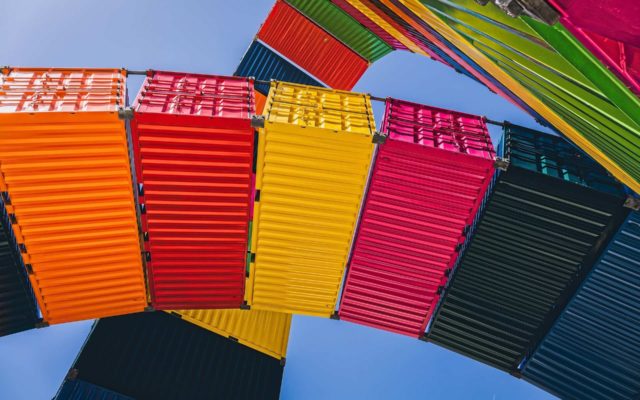Supply Chain Strategy
Give your supply chain a head start ! Build your Supply Chain Scenario !
Change is accelerating, and uncertainties predominate.
Supply chain models designed 20 years ago are no longer sufficient.
Reconciling operational urgency (reactivity) with the need to launch the right projects and make decisions for the future (anticipation) is no longer tenable without taking a step back to re-examine supply chain strategy and offer business support scenarios in an uncertain environment.
The supply chain must be a driving force behind proposals and transformation.
We can help you with our Scenario Supply chain offer
Why the status quo is no longer tenable ?
Whether we’re heading for chaotic growth or forced degrowth, current systems and their supply chains will continue to be put under pressure by the environment. This accentuates the need to adapt and transform. We are witnessing a paradigm shift in which uncertainty is becoming the norm.
However, these “pressures” on the supply chain can be classified into 2 categories: either “react and decide quickly”, or “anticipate and prepare”.
The challenge today is to find the right balance between eco-systems, markets and internal resources.
When this balance is not achieved, the company’s P&L is weighed down by potential additional costs, lost sales or risks.
The questions our customers ask :
– What are the risks to my value chain?
– What are the scenarios for the evolution of my eco-system? What events do we need to prepare for and react to?
– What are the expectations of my market and my customers? How will they evolve?
– What’s the right balance between reactive and predictive supply chains? Where are the strengths and weaknesses?
– Managing day-to-day operations while leading transformation and modernization projects: the impossible equation?
– Short-term cost-cutting to combat inflation, or structuring projects and investments to prepare for the future?
– How can we identify the priority projects to launch now in order to be efficient/sustainable tomorrow?
– Should AI be used everywhere? What are the right tools to use?
Our Scenario Supply chain Offer :
Ultimately, the aim must remain to make our supply chains a competitive advantage focused on customer satisfaction, and to ensure that they are resilient, agile and sustainable.
In this context, it is imperative to have a structured, iterative approach to building the right roadmap, brick by brick, and according to a sequence specific to each company. And find the balance point that your supply chain needs to bring to the dilemma Reactive vs. Anticipatory, while adapting to different scenarios.
Finally, we need to adopt a far-sighted approach to the use of technologies (AI, ML) and the data at our disposal, as a tool in the service of an ambition.
The process :
– Help you rethink supply chain strategy in line with corporate strategy (scenario planning, risk-based management)
global or local sourcing, tomorrow’s short circuit offer? What changes in my customers’ consumption patterns will impact me tomorrow? What promise should I make to my customers?
-Help you to see clearly and prioritize the right projects (Anticipatory and Reactive) and the right sequence, according to your context, your resources and your market, by making the most of the technologies at our disposal (diagnosis of the 10 components of your supply chain, see diagram below).
Data lake for what? control tower or AI for 2-year forecasting? lots of stock or good S&OP? energy transition: should we start now? electric or hydrogen? should I move my central warehouse?
Help you to manage and deliver high-impact projects more quickly (and/or abandon projects that have become obsolete)
How do you manage a project when the whole team is focused on day-to-day operations?
Help you identify logistics cost-cutting quick wins to reassure your CFO and/or CEO.
How can I secure an investment budget for a future project and fill the gap in my budget for year A?
-Help you anticipate the right movements and pivots to activate to build a sustainable, even circular, supply chain. Take advantage of the new CSRD to strategically plan your risks and adapt your supply chain in response.
How can I integrate BEGES, REP and CSRD regulatory requirements into my road map, and what impact will this have on my supply chain choices? And tomorrow, how can I implement a circular supply chain if my customers demand second-hand products?

Expected benefits and objectives ( from to )
Supply chain Classic Scenario Supply Chain
|
FROM |
TO |
|
The mechanical, deterministic planning approach to “strategic” budgets and plans |
Towards a more systemic approach to anticipating possible scenarios, restoring our ability to anticipate and react. |
|
Single decision criterion: short-term cost |
A more measured, balanced, multi-criteria approach: cost, meaning, sustainability, agility, reversibility |
|
1 plane = a form of rigidity |
Several possible plans = agility |
|
Siloed professions |
An integrated approach |
|
The supply chain, the “last wheel” in strategic planning |
The supply chain as a source of proposals and transformation for tomorrow’s business models |
|
Risk analysis confined to the risk management department |
Risk analysis (and possible responses) as an integral part of supply chain roadmaps |
|
The supply chain’s internal voice is often not heard loud enough |
A voice that counts in building and anticipating tomorrow’s value chains. Value chain projection and protection at the heart of corporate strategies |
|
Linear |
Multi factorial |
|
Tunnel-effect project portfolios |
System-based, prioritized, sequenced, modular projects based on scenarios validated upstream and reviewed iteratively |
We operate in various sectors
Large groups, institutions, SMEs ; we have the resources to support companies of all sizes and in all circumstances (from long-term vision to crisis support)
Supply chain is becoming an integral part of industrial sites. Managing site supplies means working more closely with suppliers, and integrating factory workflows into the supply chain.
Our work focuses on issues relating to the organization and management of physical flows, as well as on forward-looking studies linked to territories. Our areas of expertise include urban logistics, modal shift and carbon footprint.



